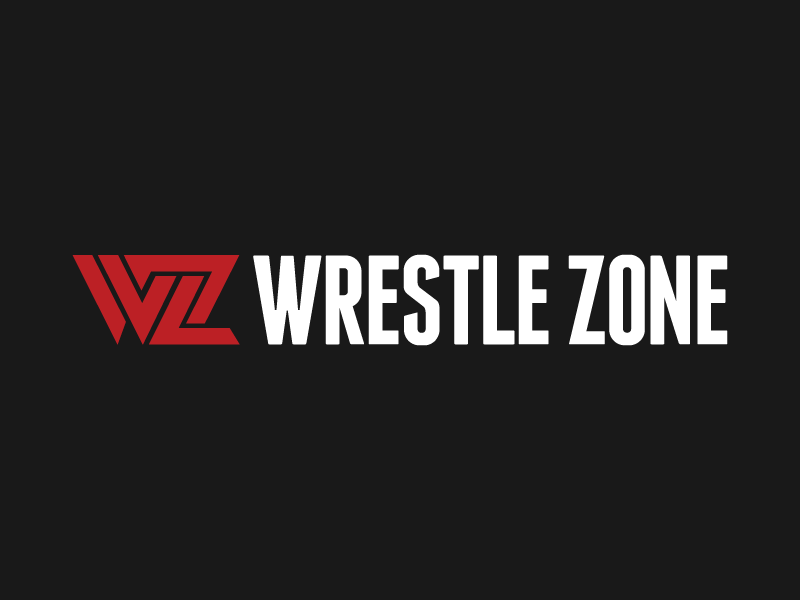Contrary to the forever shifting and transforming technology of the world, the forces of nature always inevitably reassert their dominion over humanity. No machine, program or power source can ever match the primitive raw power of the natural world, and this somewhat paternal role is a source comfort for the human race. Just as complex technology is obselete in the face of the primal forces, technology is being escaped from every day as tourists, immigrants, and sea changers flee to tranquil sanctuaries such as beaches, rainforests and outback towns, hoping to get ‘back to basics’.
This is just one of many examples of our distaste for the self-inflicted overcomplication of the world we live in. Everything has been added to, layer upon layer; to such a degree that the basic scaffold it once was is long forgotten and no longer recognisable. Professional wrestling is no different. Not a particular dynamic industry, although, on the surface it may seem the face of wrestling has been operated on meticulously, but in essence the basic structure of wrestling has remained relatively unchanged.
In recent years, wrestling has seen a lull in popularity, the excuse given being that wrestling moves in cycles of interest. Although this widely praised concept is accepted by most, no one has charted where the cycle begins and how it has moved over the decades. If one looks at professional wrestlings popularity since it’s inception between the wars, wrestling has actually only had a significant dip in audiences in the last five years. Between the war years and wrestlings peak in the late 1980s, its popularity was gradually crescendoing, gathering steam through the fifties and sixties, the seventies setting the platform for wrestlings international recognition in the 1980s, on the back of figureheads such as Hulk Hogan. Only in the stagnant period following the collapse of the Monday Night Wars, has wrestling dipped in fanbase numbers. But strangely, this dip isn’t as severe was we’ve been lead to believe, some prophets suggesting the end of professional wrestling is on the horizon, in fact ratings have decreased to a level seen in the early nineties or even the late eighties. So this excuse of ‘cycles’, is nothing more than a desperate attempt at explaining why the exponential growth of wrestling couldn’t continue, when in reality the boom in wrestling through the eighties and nineties was the exception rather than the rule.
Regardless, wrestling does seem to be in a directionless limbo, a time, unlike the Attitude and Golden eras of wrestling, that isn’t yet clearly defined as anything in particular. This is evident in the trial and error style of creative writing and characterisation currently being tested in the WWE. This is not going to help. The characters did not define the various eras of wrestling, but rather how the context affected the environment of wrestling. And just as wrestling is directionless, it’s no coincidence that the world is also currently in a state of indirection. So, whilst the context remains as such, wrestling will remain vulnerable to the world’s condition.
But if wrestling is to return to its gradual rise in appeal, action must be taken. Whilst blame is being put upon the superficial elements of the sport, i.e., the talent, the gimmicks, it’s the most primitive of components that are at fault. Just as people take solace in simplicity, perhaps promoters should look to the very foundations of the sport as a cause of the disinterest. The reason for this being that over the decades the façade of wrestling has adapted styles and characters, yet the patterns and dynamics of the sport have remained unchanged to what they were in the war years. The audience of the early years were ignorant to the fact that wrestling was indeed choreographed, viewing it as a competitive sport, and so, the structure was molded to fit that ideal. However, half a century later, the ‘fake’ nature of the sport is widely publicized and known; yet it still operates under the guise of a true sport.
Kayfabe has and always will be an integral part of professional wrestling, fans nowadays simply paying lip service to it so they can watch the matches in between, but the mechanics and structure of wrestling has become so repetitive that long time fans and fans who jumped on the bandwagon during the WCW wars, can predict the way an angle or match will play out, right down to the specifics, giving them little reason to tune in on a weekly basis. Patterns have started to become incredibly obvious. For example, the lead up to a main event championship pay per view match has a set chain of events which lead up to it, the initial engagement; a run-in or call out by the challenger, the development process; a series of tag matches and ‘face-off’ promos, the confirmation; a contract signing, stipulation agreement, or a general manager announcement, and finally, the tease; a situation where both athletes finally get their hands on one another but are somehow obstructed by security or otherwise. Rinse and repeat. This series is repeated with every main event feud in recent memory, every now and then a third member is introduced or some other minor superficiality, but basically little is different.
The limited inventory of stock angles has also become obvious to the audience, the ‘challenge’ angle, as seen with the current Masterlock Challenge and Angle Invitational, the ‘mystery’ angle, such as the attack on Flair, the ‘talkshow’ angle, Carlito’s Cabana and Christian’s Peepshow among others, and the ‘youngblood’ angle, where an older superstar breaks in a cocky upstart. There a several more angles that are used cycles, but these just some of ones currently in circulation. Although they showcase new and different talent, the angles, due to being recycled so often, have played out all the possible variations of outcomes.
Because the foundations and mechanics are becoming so familiar, so too are the matches, denying the audience of the one thing that they tune in for. Wrestling, being a primarily entertainment driven sport, if the build up to a match is the same to the one before, the meaning behind the match is diluted, coming across as manufactured and insincere, and therefore the match really exists because the company has to fill in time between promos. This is the reason why the current Matt Hardy and Edge angle is so captivating, because of the reality of the situation, work or not, it reaches out and takes hold of the viewer rather than simply being a halfcocked excuse for two men to compete.
Although the basics of the business have remained virtually unchanged, only recently have they begun to cause concern, the only explanation being the increased frequency and access to the product. Even at the height of wrestling popularity, around Wrestlemania 3, there were no more than two shows available for fans each week, but nowadays, there are two main weekly shows, two medium shows, several summary or other related programs, and the now more often than monthly pay-per-views. This increased output means that the mechanics are being repeated more often and over a shorter period time, as well as giving the audience more of an opportunity to identify the patterns. Even the most casual of fans, if they tune in only sporadically, can see the repetition of the stock standard procedures and structure wrestling functions through.
The irony is that these most basic workings have become so entrenched that the business has developed a dependency on them and therefore it’s near impossible for them to be changed while keeping the business still up to expectations. They now act as the skeleton of the business, without it, there’s nothing to build the more superficial elements on. But the question remains, is there a means by which this can be modified, even in the slightest, so as to renew interest? There’s no doubting people have come to expect the patterns of the business, but as can be seen in the current Matt Hardy feud, the breaking of the fourth wall, the division between entertainment and reality, seems to be the way of the future. By doing so, it offers a vast range of new structural possibilities and patterns because it doesn’t limit wrestling to the vicinity of the ring. But, as with the mechanics before, if it’s overused it’ll suffer a similar bout of disinterest.
As always, the same patterns can continue to be used into the future with the business plateauing at the same level of interest and still receiving copious profits, but for wrestling to boom once again the business should seek a sea change and escape the motions they’ve locked themselves into and look to expand, instead of squandering the potential by settling for the easy option and ignoring the fundamentals.
If you would like to send feedback, criticism or questions, send it to my email TheButchershopColumn@hotmail.com.
Over and Out
The Butcher








